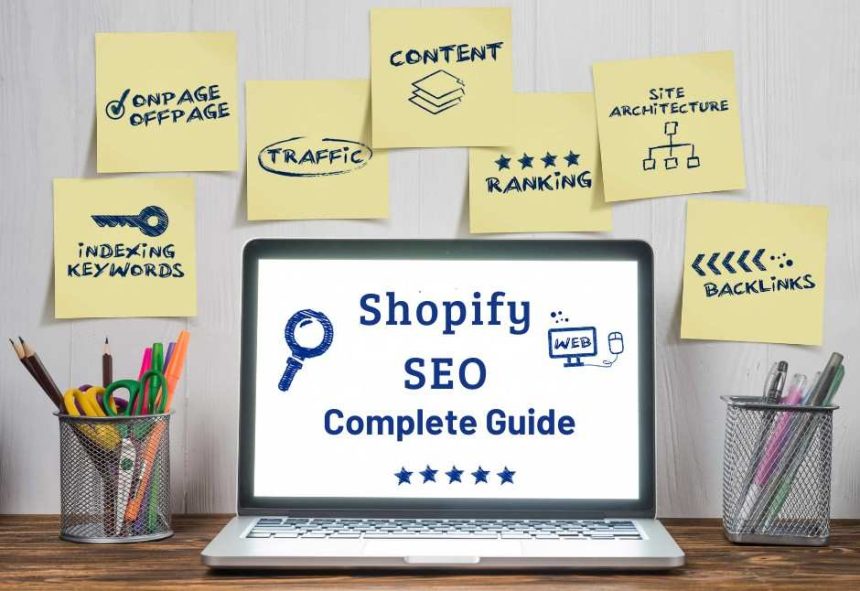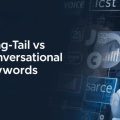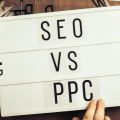So you have your Shopify store up and running. Fantastic. You’ve got your products, you’ve got your payment gateway, and now you are ready to take Perth’s ecommerce world by storm! There is just one problem: when people go to Google, they cannot find you.
Sound familiar?
Here’s the thing about Shopify. It’s ideal for getting an online store set up in a hurry but will not make customers magically appear. Solid Shopify SEO plays a crucial role in this situation, and the good news is that it doesn’t have to be complicated. The vast majority of Perth businesses are doing it wrong.
If you are serious about eCommerce SEO, you need a strategy that extends beyond the basics.
Let me take you through the things that do work.
What makes it worthwhile to focus on Shopify SEO?
Well, consider how you shop online. When was the last time you visited Google’s second page? That’s right. You might as well not exist if your Shopify store isn’t listed among those top spots.
The great thing about doing your Shopify SEO right is that unlike paid ads (which empty your bank account the minute you stop paying), excellent SEO keeps working for you. Day and night. Even while you’re at the beach or after having slept.
For Perth eCommerce businesses, in particular, it’s huge. You’re up against local stores and big national brands. While the competitive landscape may not be entirely level, effective SEO strategies can significantly increase your visibility.
The Technical Stuff Nobody Talks About
In Perth, businesses start here because this little detail has a big impact. In less than fifteen words, the opening line of this paragraph should convey the main idea. They will also gain a solid understanding of everything else if they continue reading: technical search engine optimisation.
Shopify store owners think lying to them is pointless, but not to other brands. And that might be a serious error. Even if your product descriptions are outstanding, have you considered the possibility that Google search engine spiders might not frequently visit your website? It resembled speaking to the air.
Speed Is More Important Than You May Think
More than ever, your site has to be fast. “Quick” does not mean “fast”. Since 2018, Google has made mobile page speed a ranking factor for searches on mobile devices, a move which means slow sites will be displaced in search results. According to their figures, 53% of mobile users leave a page after three seconds if it doesn’t show up fast enough.
While Shopify provides a basic starting point here, you must optimise further. Compress all of your product images. Everyone. Use lazy loading to make images only load when someone scrolls up to see them. Remove any apps you don’t actually use; they will just drag everything down.
For Perth companies – we do technical SEO audits all the time – the biggest problem is slow loading times. So fix this first
Mobile-Friendly or No Sale
Here’s a statistic that should scare the pants off you: over 70% of eCommerce traffic comes from mobile devices. Research by both Google and SOASTA discovered that when page load time goes up from one to three seconds, bounce rates rise 32%.
At five seconds? A full 90-fold increase takes place.
Examine your website on actual computers. Get your phone out, go into your store, and make a purchase. Is it challenging? After that, it requires work. For more techniques on mobile optimisation, read our guide “How to optimise websites for mobile seo.”
URLs and Site Structure
Shopify generates URLs automatically, which is great until they’re a mess. “yourstore.com/collections/products/blue-widget-12345” when “yourstore.com/blue-widget” would rank better.
Clean URLs are simpler for Google to decipher and easier for site visitors to remember. Organising your collections logically, based on how customers actually search, requires a significant amount of work. Selling outdoor gear? Dissect it: camping, hiking, fishing. Simple.
The On-Page SEO Checklist for Your Shopify Store
This is where you actually explain to Google what your pages are about. Get this wrong and you’re asking Google to guess. Google doesn’t like guessing.
Title Tags That Don’t Suck
Your title tag appears in search results. It’s your first impression. Maybe it’s just your impression. For product pages, tell what the product is and give people a reason to click. “Blue Running Shoes” is boring.
Additionally, “Men’s Trail Running Shoes — Waterproof & Comfortable” tells the story more effectively. Don’t let them go over 60 characters, or Google will terminate them.
Meta Descriptions People Actually Read
Those are the tiny snippets beneath your search result title. Shopify allows you to customise all of these, so do it! Write as if you’re persuading someone to click.
Explain to them what differentiates your product. Don’t leave them blank, because then Google just takes some random words from your content, and that’s not what you want to show up in the search results.
Headers and Product Descriptions
The difference is that your headers and product content make all the difference between a store that ranks and one that does not.
- Use H1s for headings and H2s for subheadings. People often skim, so please ensure it is easy to scan
- Avoid wholesale manufacturer descriptions and simple feature lists.
- Your product descriptions have a two-fold purpose: You need people to find you (SEO) and then convert them into buyers.
- “[But] write for humans; [include] actual search terms people are using.” Google detects keyword stuffing.
- Tell a story. Aid customers in visualising using the product. That’s what converts.
These fundamentals provide the context Google needs while keeping your customers interested. Get those right and you’re already way ahead of what most Shopify stores are doing.
Content Strategy Beyond Product Pages
You’re losing out on a lot of money if you think SEO is just about improving your product pages.
Blog Content That Actually Helps
- Starting a blog on your Shopify store will enable you to target informational searches people do before making a purchase.
- Someone who’s Googling “how to choose running shoes for flat feet” is still not ready to buy. However, if your blog post effectively addresses their query, where do you anticipate they will make their purchase?
- Please continue creating the tutorials you already produce, and attract blog traffic by addressing customers’ common questions.
- Even Perth-based businesses can create content that focuses on local angles. What products are best suited for the WA climate? Do you have advice for Perth-specific situations? Use that local knowledge.
Collection Pages That Work Harder
- Your collection pages should not just be a grid of products. Add actual content to them.
- Write a paragraph or two describing what’s in the collection. Why are these products important? What are they useful for?
- This provides Google with more context and gets you ranking for broader category terms.
Blogging and optimising collection pages go hand in hand to make your network bigger. You want foodies to look for your products, and you’re building authority and attracting customers at every stage of their buying process.
That’s smart eCommerce SEO.
Local SEO for Perth Shopify Stores
Local SEO for Perth businesses Even if you are selling online, local SEO can provide you with a competitive advantage in Perth. Especially if you also have a physical shopfront.
Google Business Profile Setup
Ensure the accuracy of your Google Business Profile, as it plays a crucial role in attracting customers. Keywords: “Go through every field” and make it as useful as possible, including posting updates, uploading photos, and including your location in Perth.
The most crucial step is to compile reviews and reactivate favourable ones (and negative ones). Demonstrating that you’re active and responsive is about trust building.
If you want to go into more depth on what really makes local SEO tick, take a look at our 7 local SEO ranking factors every local business needs to know guide.
We assist businesses in Perth in maintaining their online reputations and Google Business Profile (GBP) optimisations because it is critical for local visibility.
Local Link Building
By securing links from other Perth businesses, directories in your area, and websites throughout Western Australia, you are sending some serious local signals to the Google bot.
These associations help Google understand that you’re a bona fide member of the Perth business community, which can increase your visibility in local search results despite big national brands.
Popular Shopify SEO Mistakes That Perth Stores Commit
Let me spare you some grief by telling you where a lot of people screw up.
Duplicate Content Everywhere
Shopify can cause duplicate content when the same product is across multiple collections. Google is viewing multiple URLs with the same content.
You can utilise canonical tags to inform Google which version should be treated as the primary one. This is a technical SEO area where professional assistance comes in handy.
Ignoring Alt Text for Images
- Every product image should have descriptive alt text applied so that Google knows what it’s looking at.
- Don’t write “image1.jpg” – describe the photo. “Women’s tan leather ankle boots” is so much better.
Forgetting About Internal Linking
- Cross-link between associated products and blog posts so customers can find more.
- This keeps people on your site for longer, telling Google that your content is valuable.
Not Tracking What Matters
You cannot improve what you do not measure. Have the right analytics to know which products people find through search, what keywords bring traffic, and where they drop off.
With our SEO reporting for Perth Clients, we’re concentrating on the stuff that really influences your bottom line.
It’s nice to be No. 1, but sales are better.
Getting Professional Help
See how you can do your own Shopify SEO. There’s nothing stopping you. But here’s what typically happens: You spend months learning, testing, and making mistakes—followed by a prolonged period of fixing them. Maybe you get decent results. Or perhaps you unwittingly damaged your rankings because SEO is a lot more complicated than it appears.
We partner with Perth eCommerce businesses to ensure their Shopify stores are ranking well and driving real customers. We’re full service; from technical audits to keyword research and content to competitive analysis for link building, we can help with all of your eCommerce SEO needs.
Now what would be the benefit of doing this with an SEO specialist who actually already knows the Perth market? We know what kind of local customers are looking for and what’s working in Western Australia.
Your Shopify SEO Action Plan
Begin with an appropriate SEO audit to determine where you stand right now. Please ensure your technical basics are in order before proceeding with speed, mobile-friendliness, and site structure. Then, you can optimise on-page factors, such as titles, descriptions, and product content.
Enhance your content strategy by creating a blog that serves as an answers page for customers. Prioritise high-quality, pertinent backlinks from Perth and Australia. Pay attention and change according to whatever the data tells you. SEO needs ongoing attention
The Bottom Line
Setting up an online store is a snap with Shopify. But let’s make it easy for Perth clients to discover your business. That requires intentional Shopify SEO.
The shops that dominate search engine results aren’t simply lucky. They are simply repeating a winning process: Solving technical difficulties, making excellent content, and earning authority by acquiring quality links.
Do you have your Perth eCommerce store ready to rank where it should? Contact us on (08) 6102 5800 for a consultation or book in now.
We will also demonstrate precisely what’s wrong and how you get your Shopify store in front of more people from Perth who are already searching for a business just like yours!
Because who cares if you have a great product if no one can find it?






